The following article comes from Diduhui, authored by Diduhui editorial department

We draw Beijing and explain the light knowledge and principles behind the city with pictures
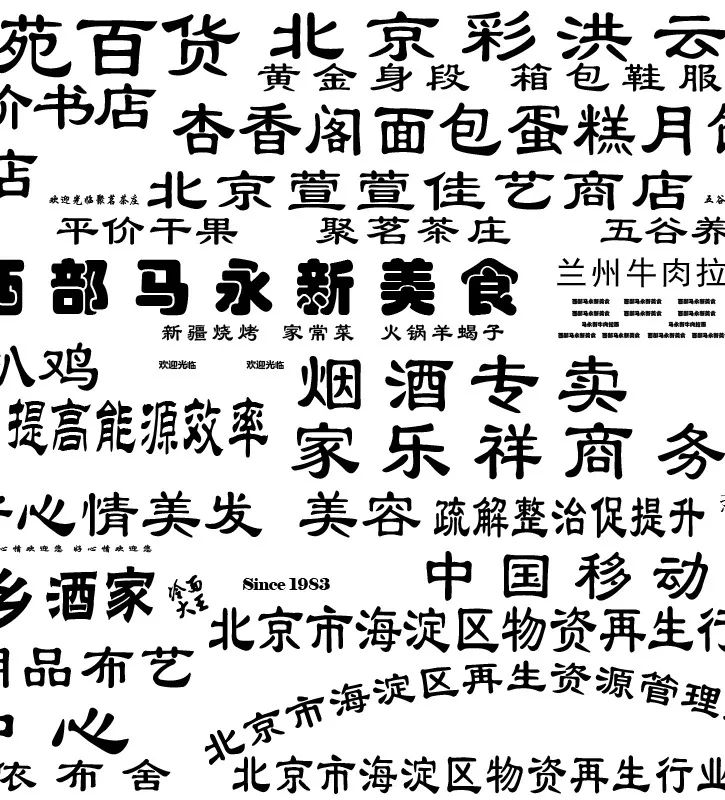
Article source|Diduhui (ID: diduhuiBJ)
▽
This is a street in Beijing...
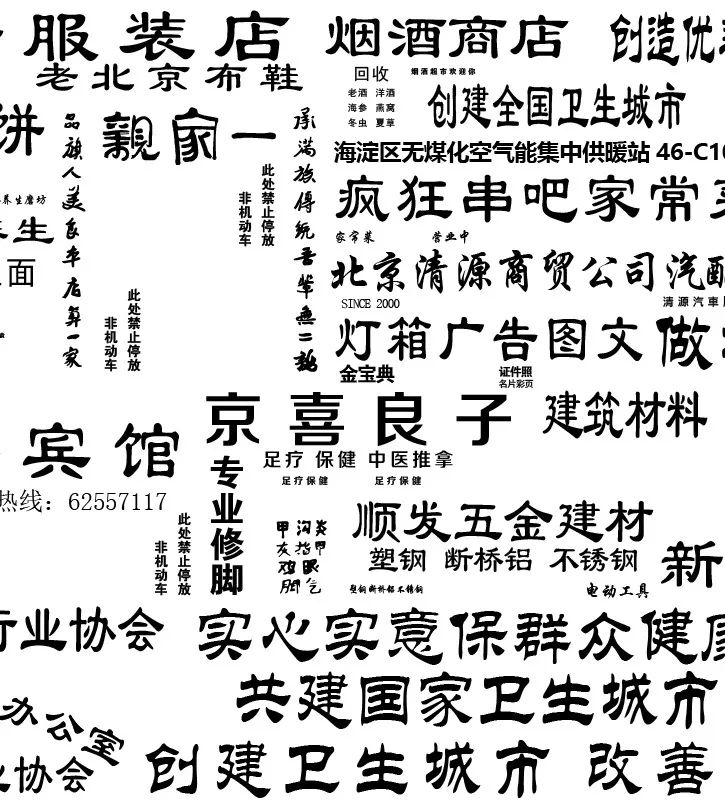
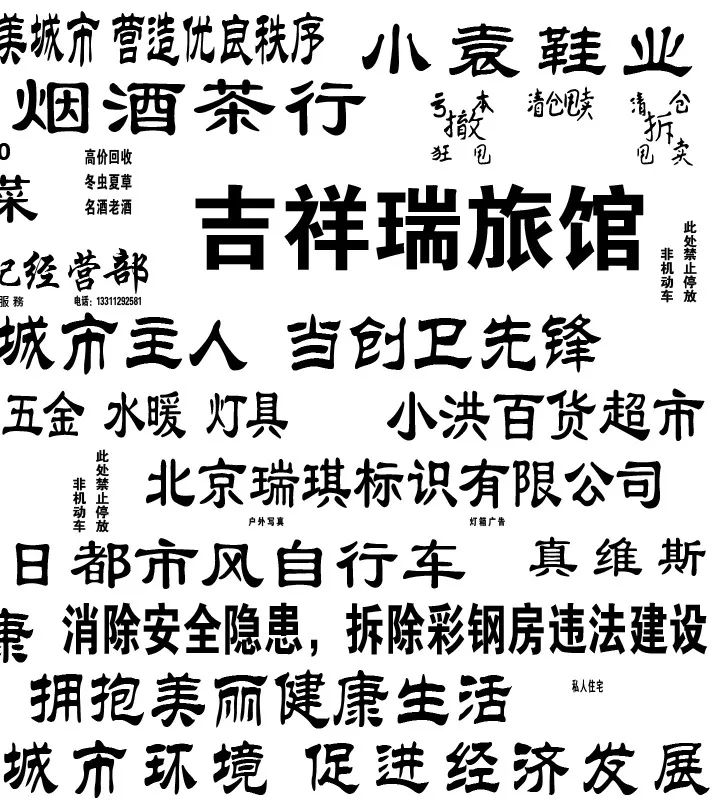


(Please swipe right)
...The appearance after extracting the text on the buildings on both sides.
There are about 800 Chinese characters written on such a 200-meter-long street. According to the average reading speed of human beings—calculated at 300 words per minute, it takes nearly 3 minutes to read these words intently, and this happens to be the time you walk through this street.
Of course, when we go shopping, we don’t have the feeling of “reading articles while walking”, but in many cases, these words may still affect the beauty and ugliness of a street, and even reflect the character of a street. Recently, Diduhui selected 8 streets in Beijing and extracted their characters within a range of about 200 meters. Can you tell which street they are? (Swipe the picture to the right to see the whole street view)
->
(This is the first one you have seen above)


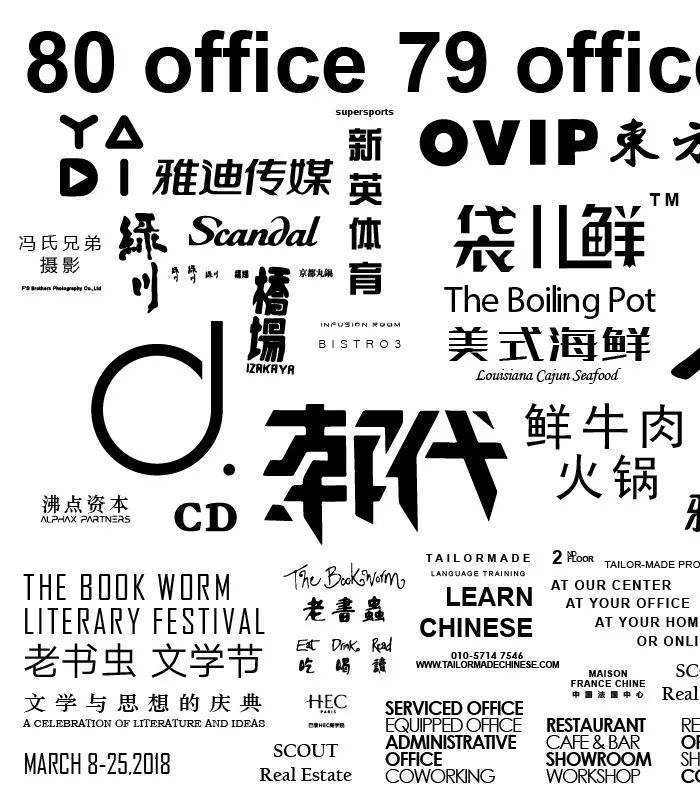
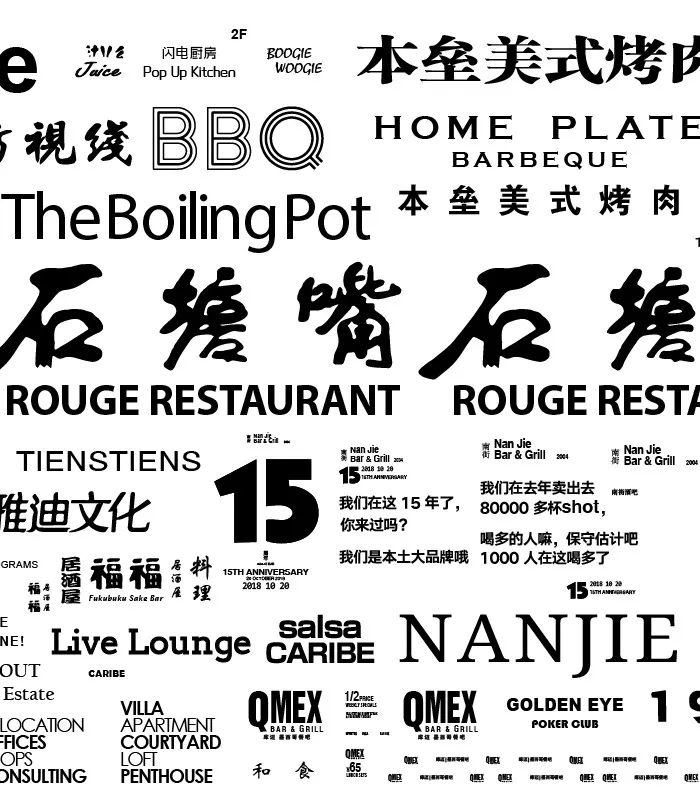
-2-
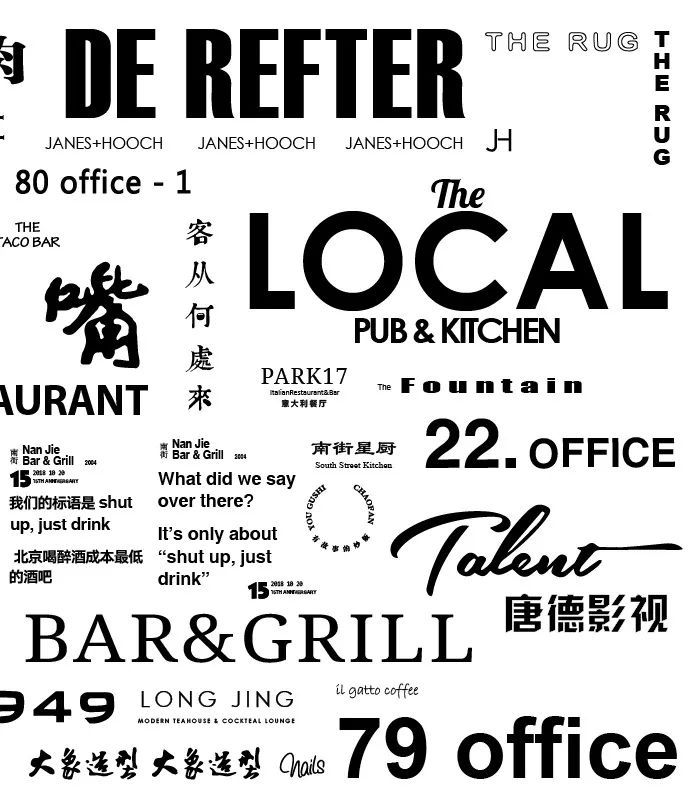
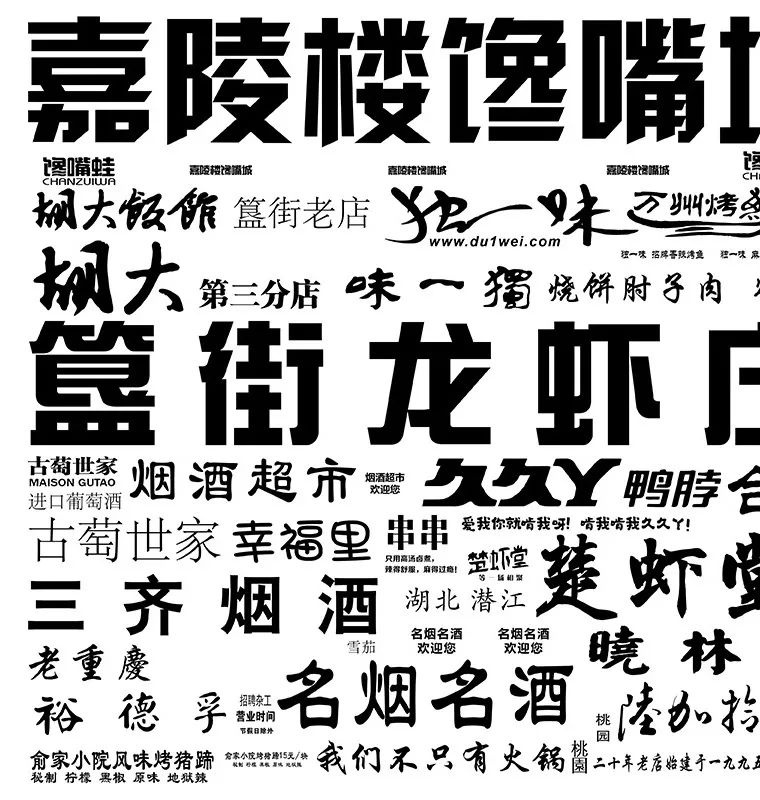
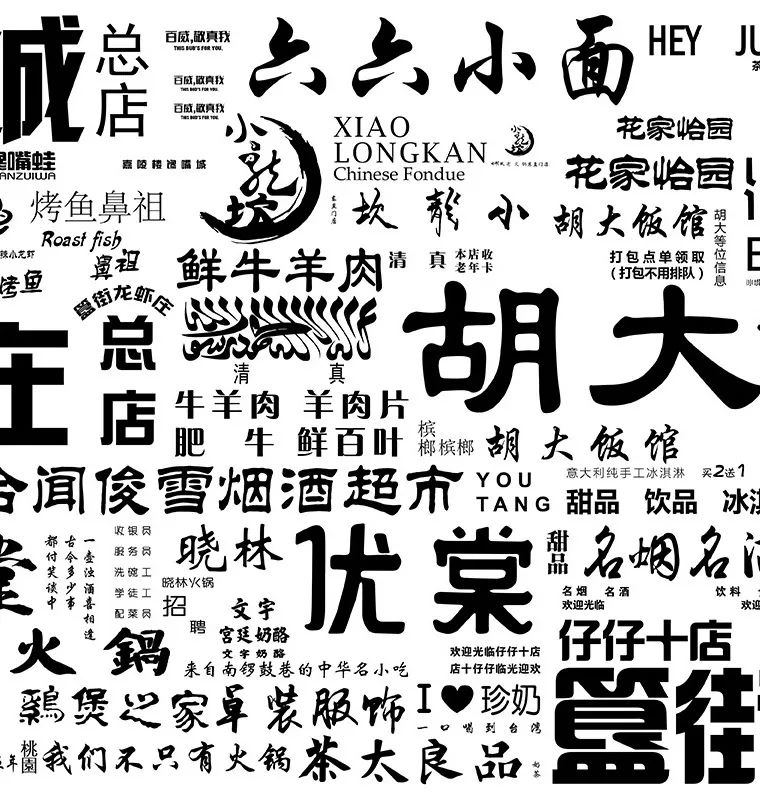
-3-
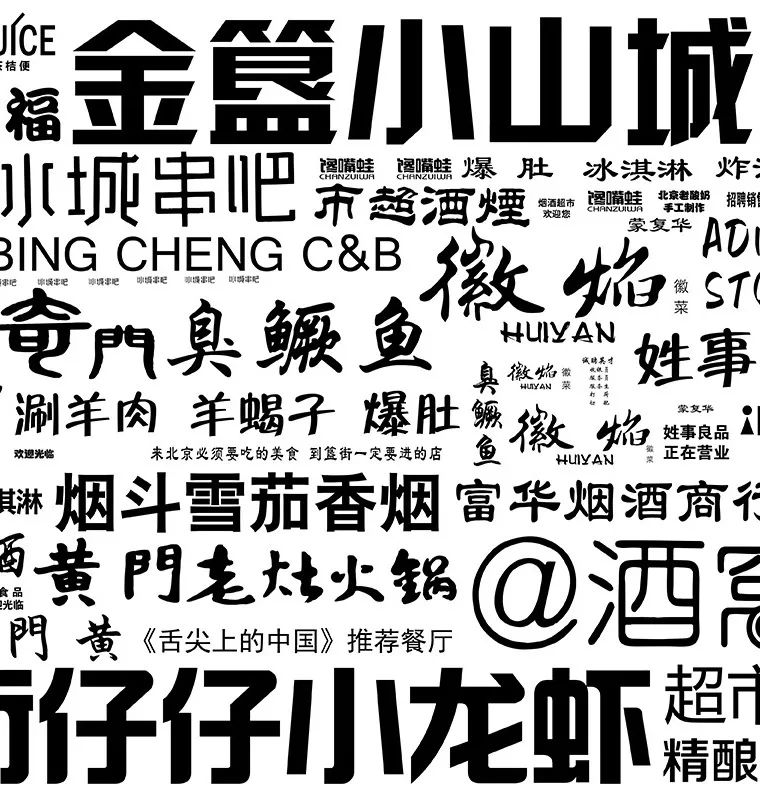
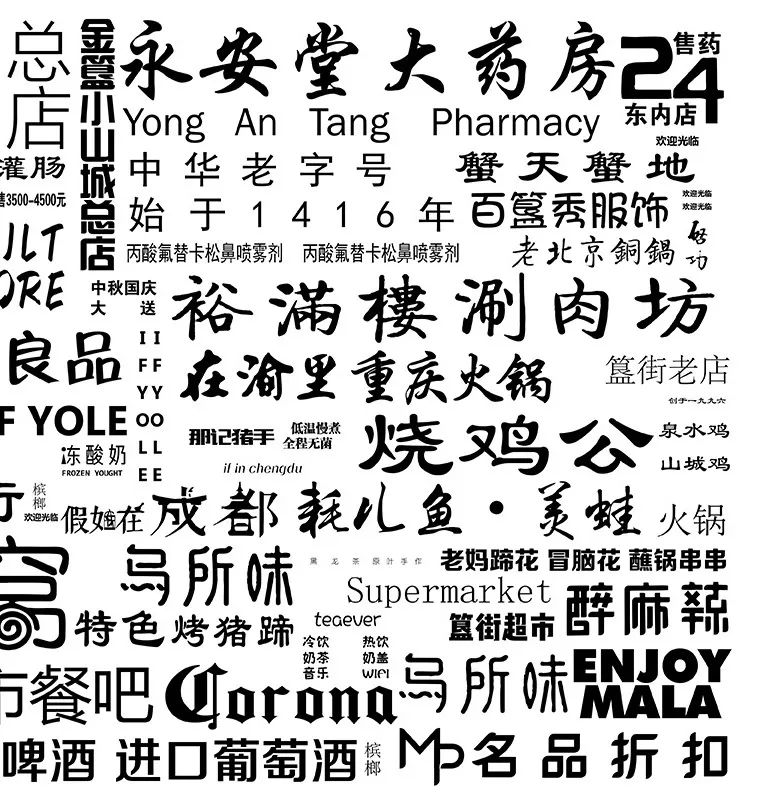
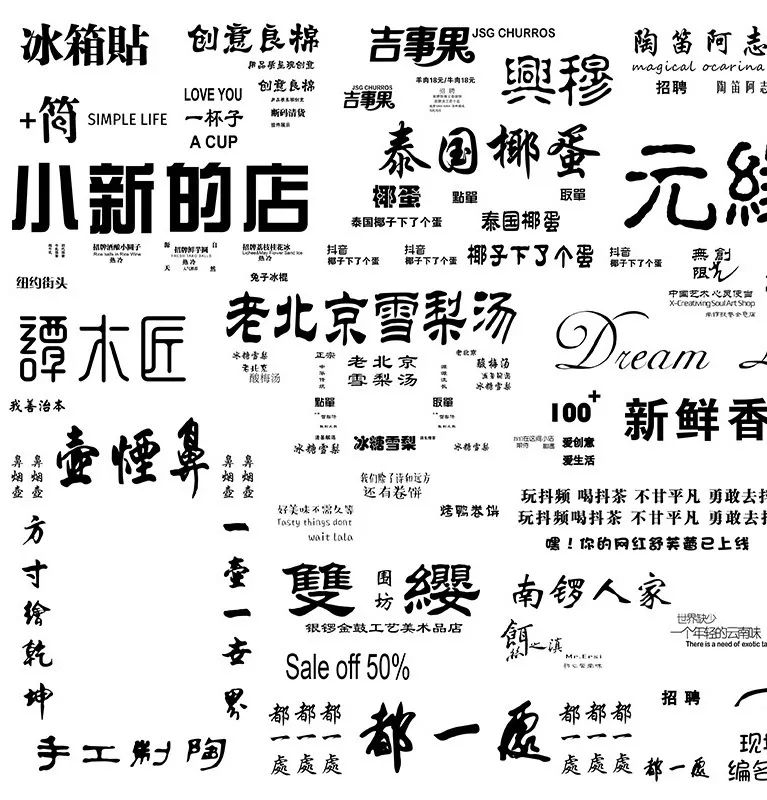
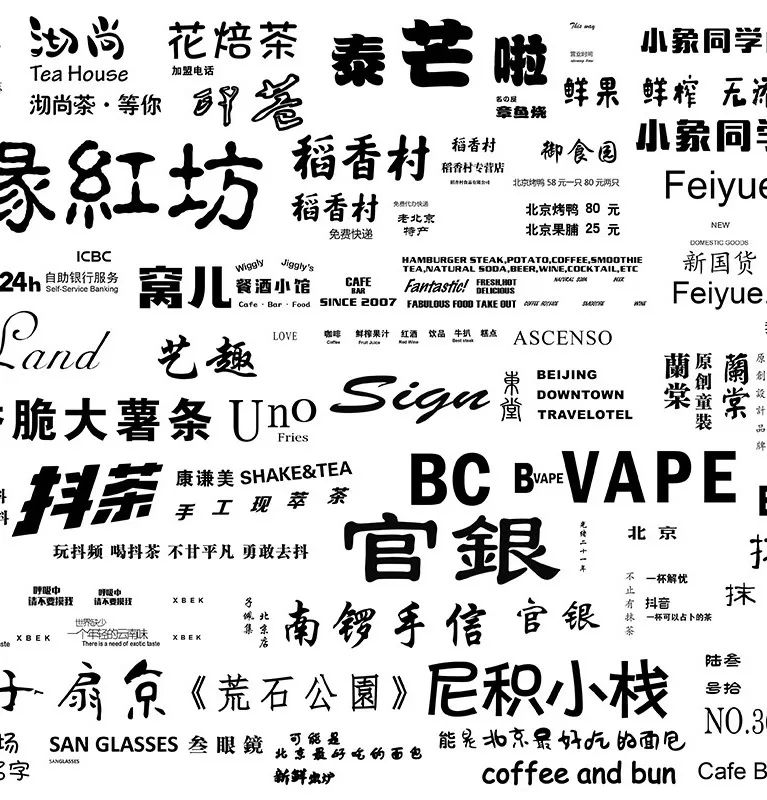
-4-
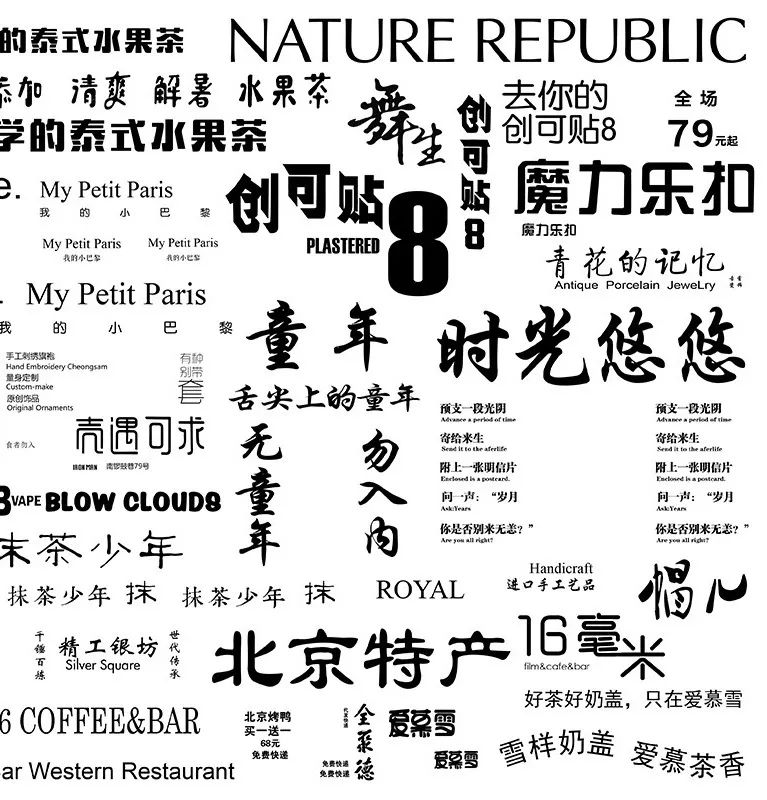
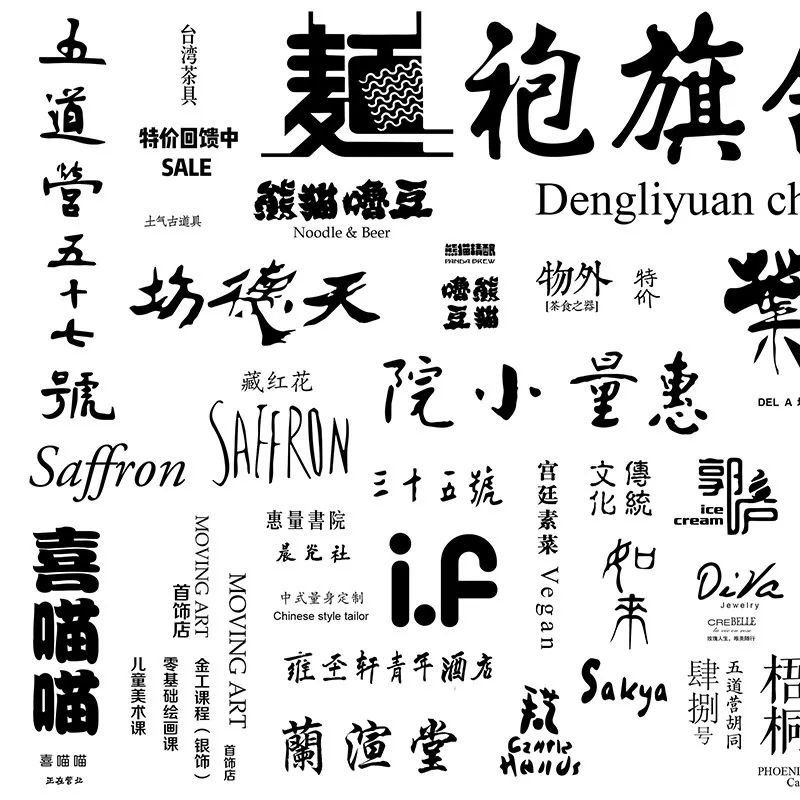
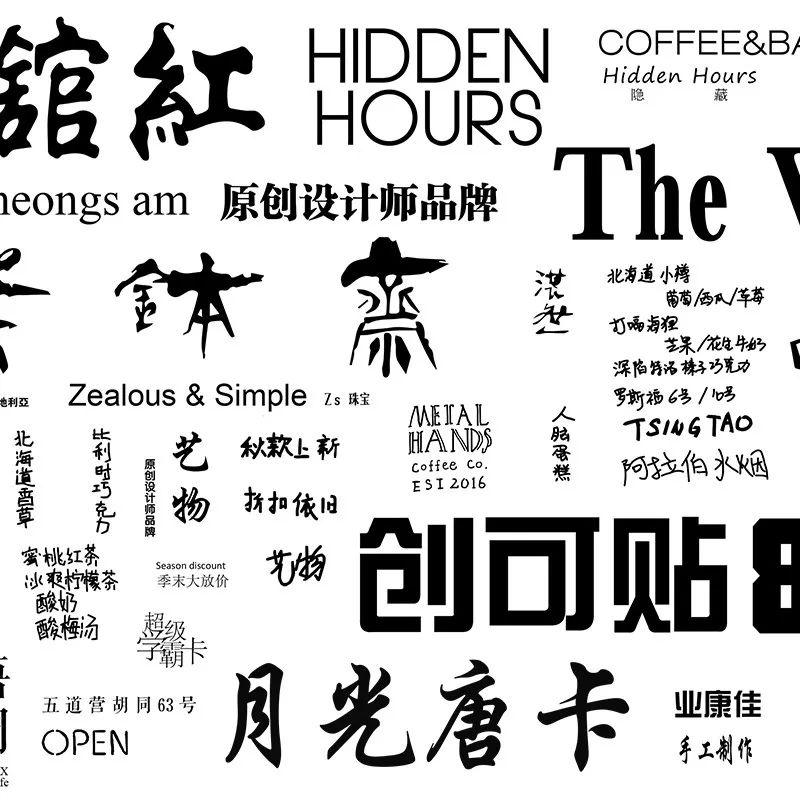
-5-
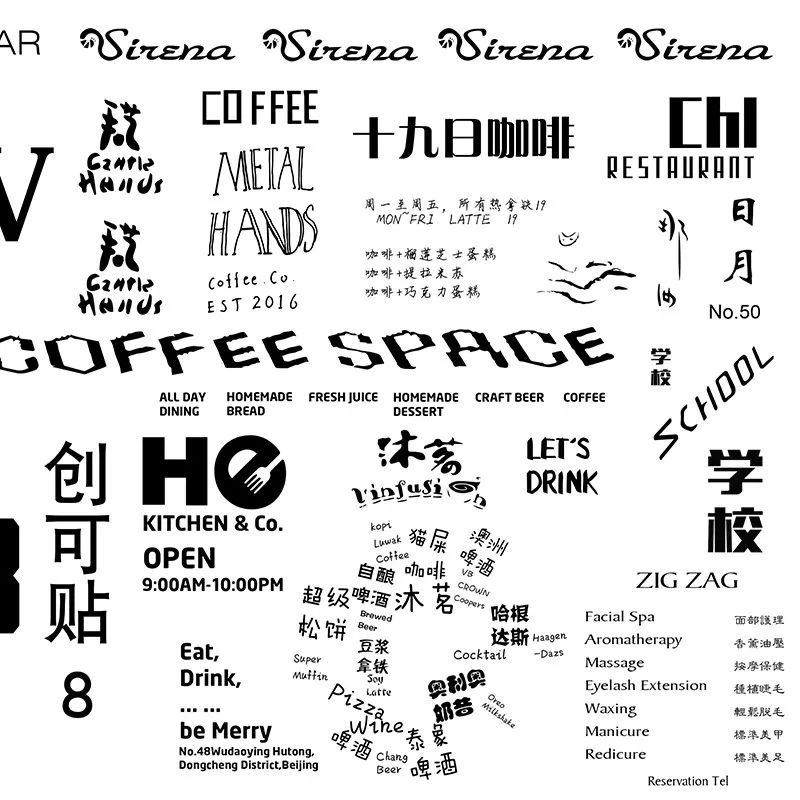
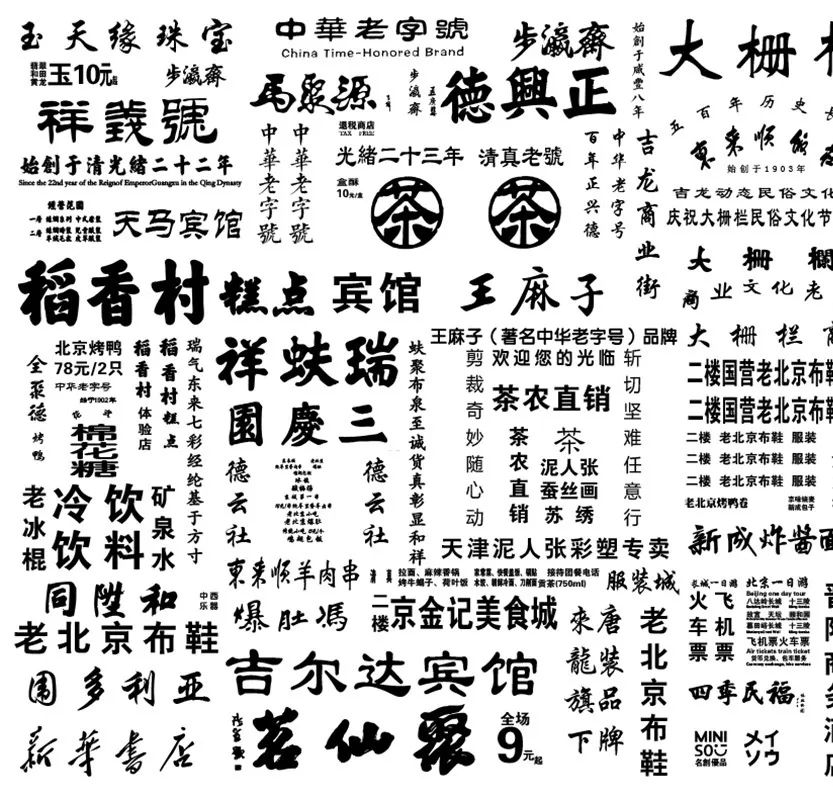
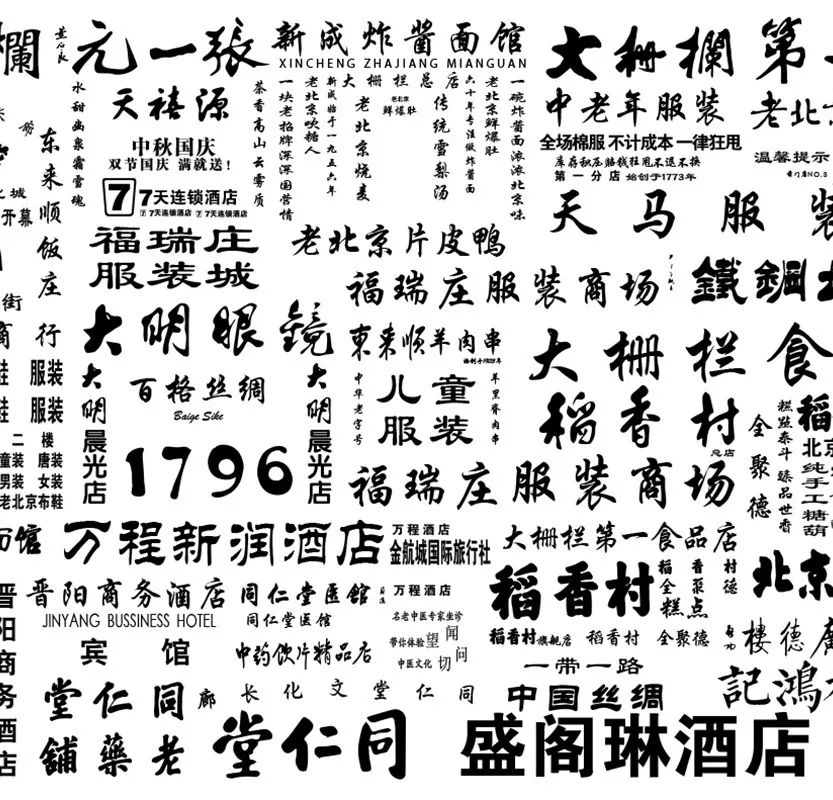
-6-
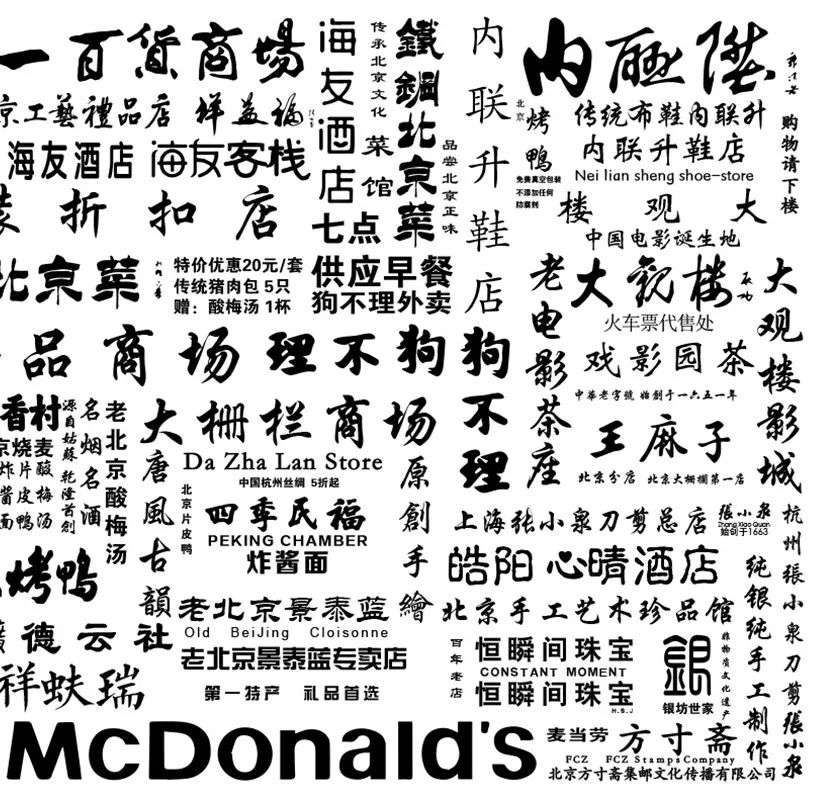
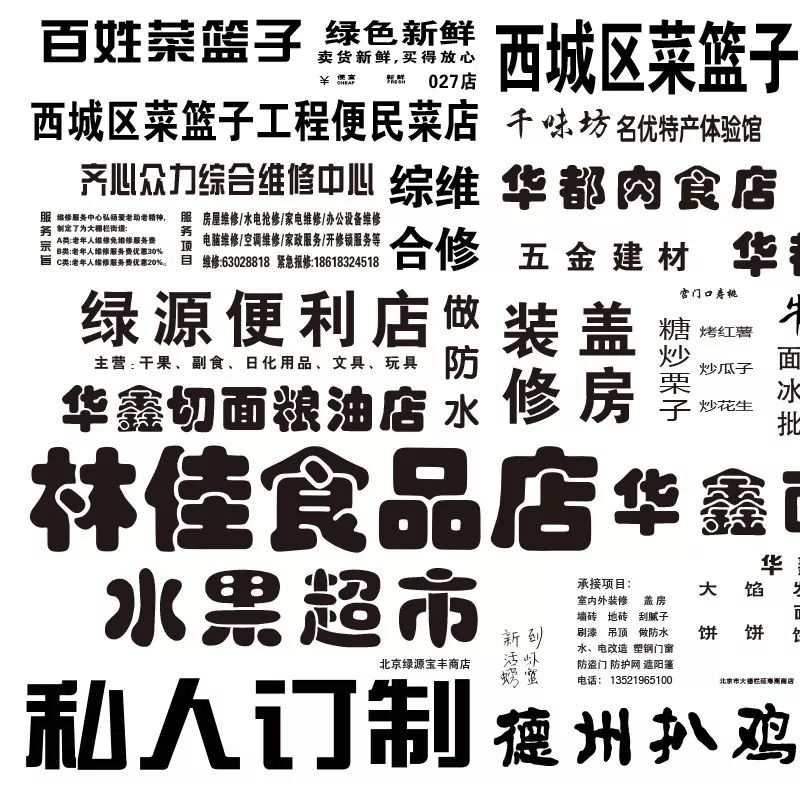
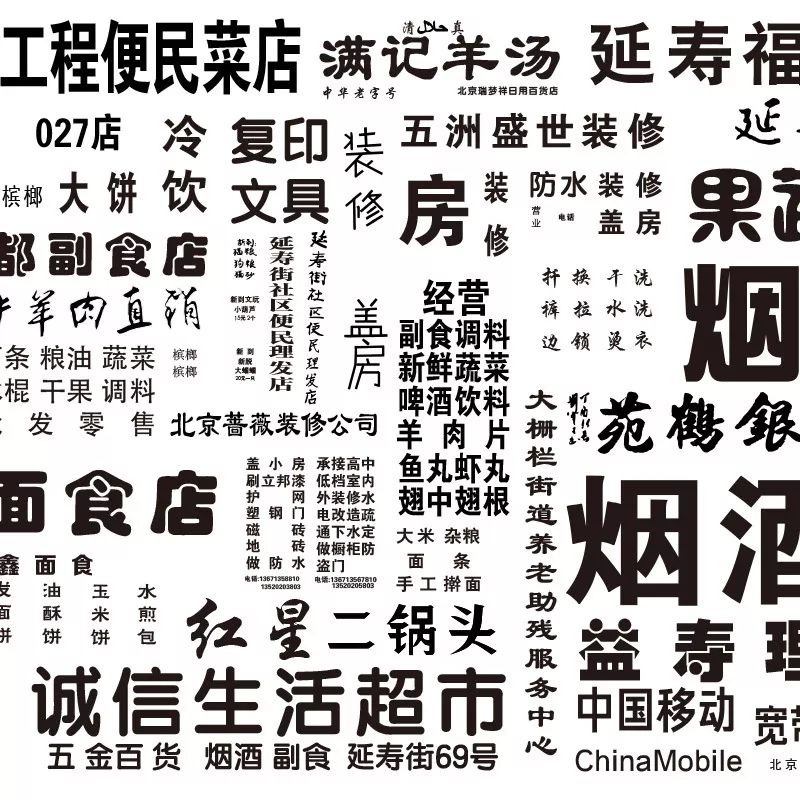
-7-
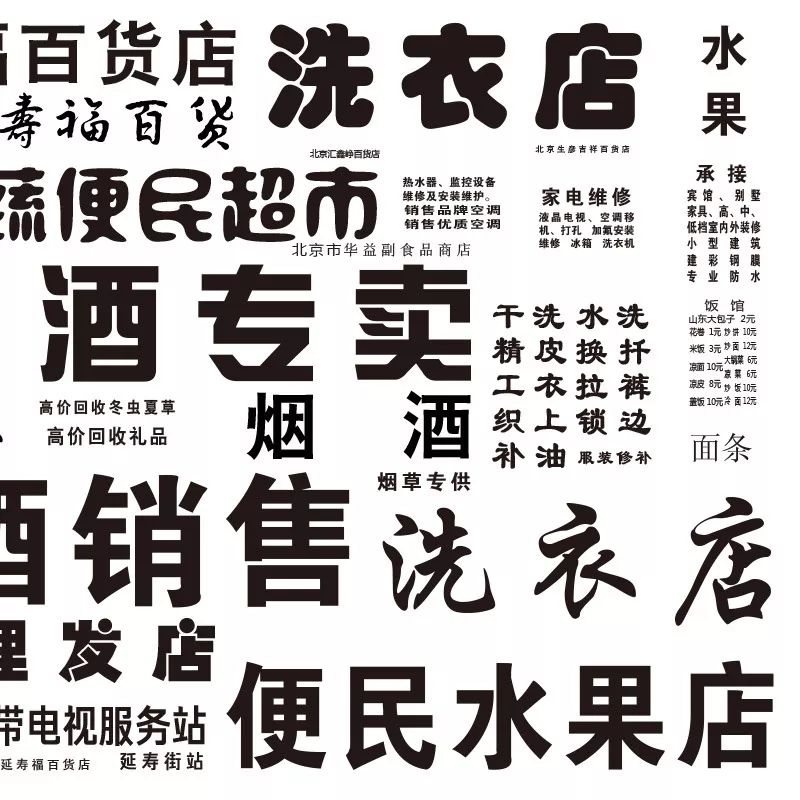
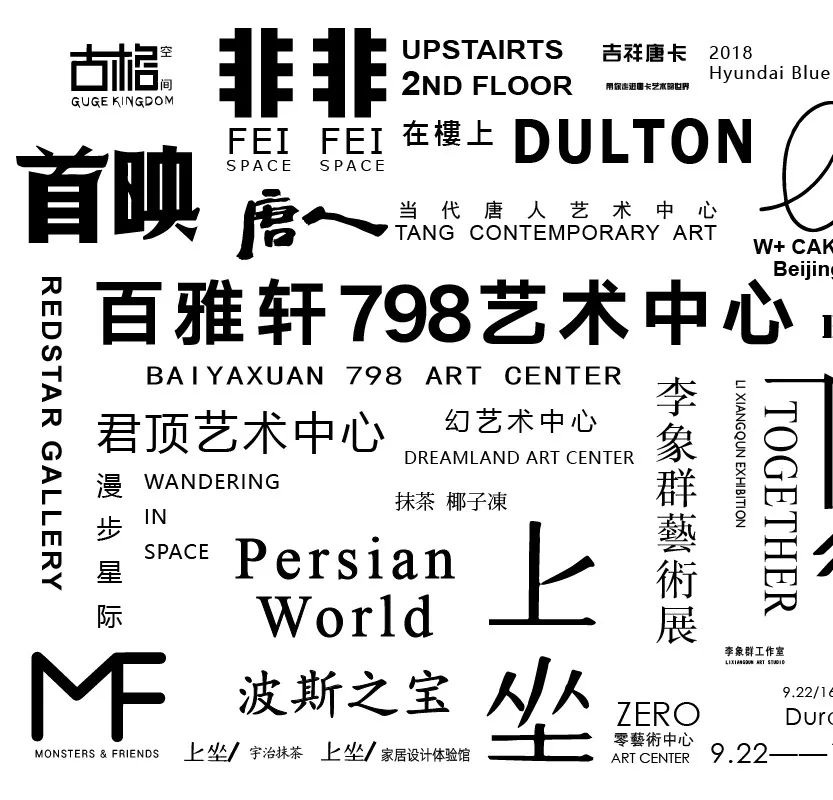
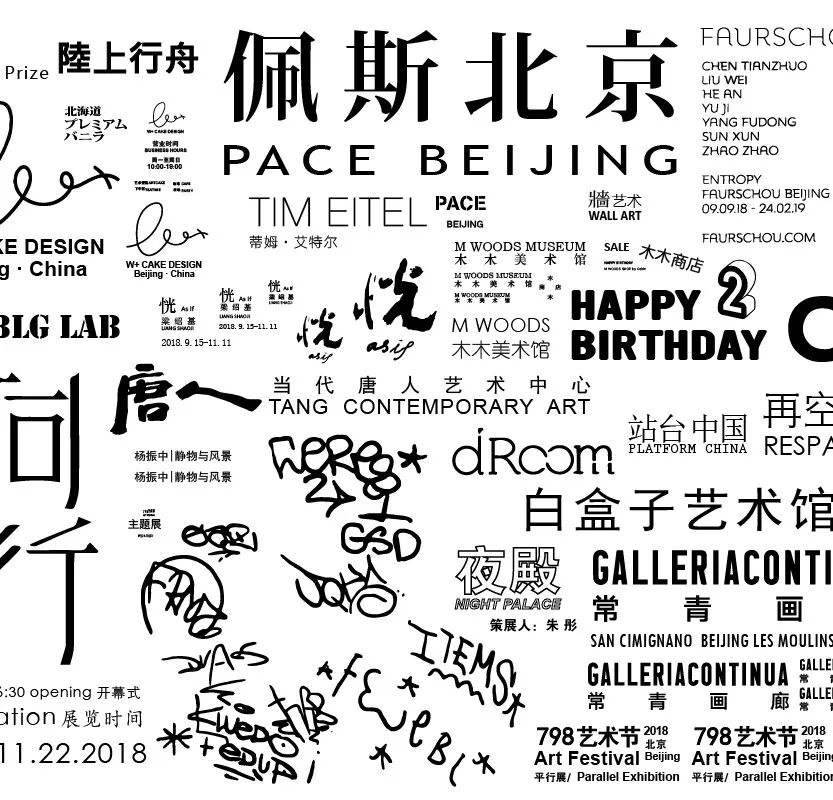
-8-
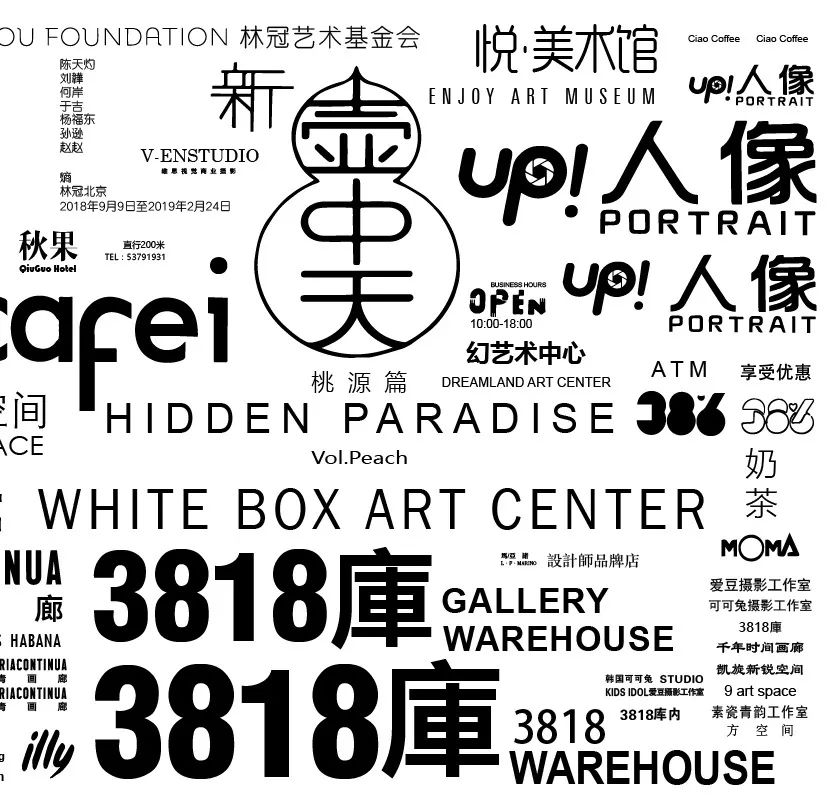

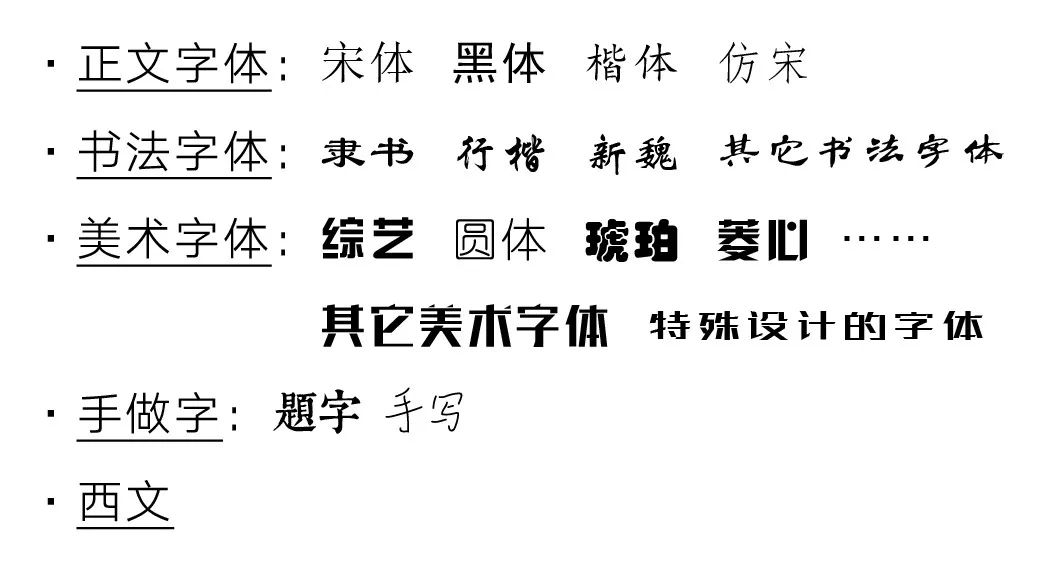
(Note: The text on each street is expressed in the same proportion, but there is no uniform proportion between streets, that is to say, a small character in Figure 1 may be larger than the one in Figure 2 in reality large font size)
How many streets can you recognize? In fact, it is not that difficult. First, many place names have been revealed in the text, and second, the differences between them are too great. So the correct answer is:

Obviously, each street has a different font preference, and we chose the most representative one to write the name of the street. The 8 selected streets are quite different in location, function and tonality, so how will this affect the fonts they choose? So we started decoding street fonts...
We first divide all the characters on the street into the following five categories (because this article mainly discusses Chinese characters, Western characters are not distinguished):
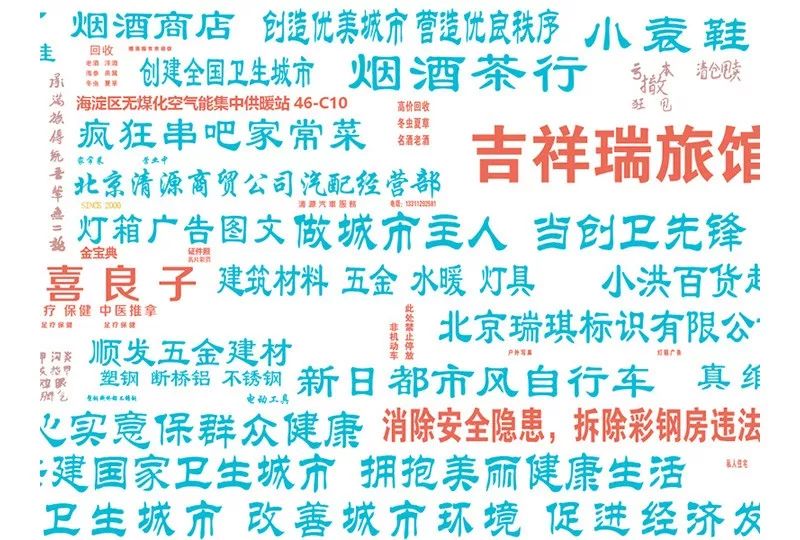
Then use the frame range of each group of characters as a standard to calculate the area ratio of each font on each street:
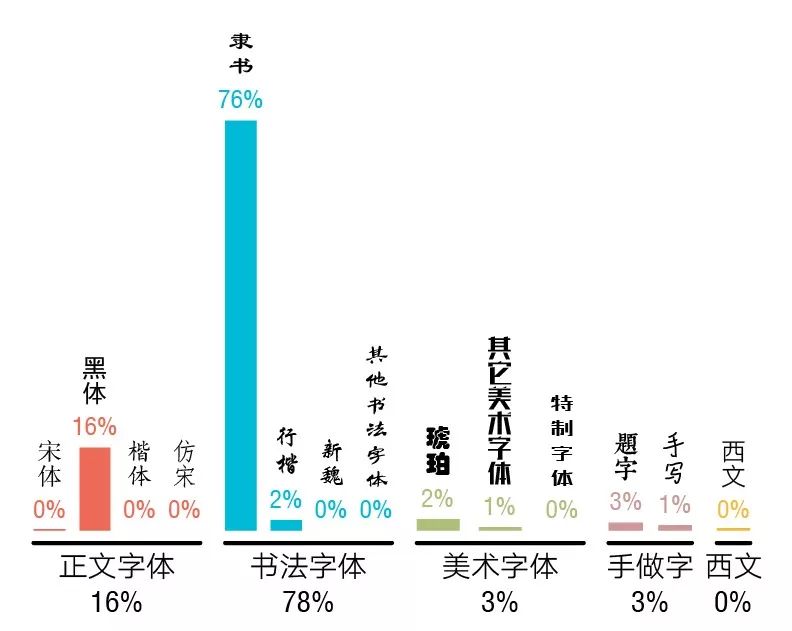


Yiheyuan Road is a street that is both extreme and universal. It is extreme because the signboards on this street have been strongly unified, resulting in more than three-quarters of the text that can be seen on the street interface using the same font—Lishu (there are two kinds of Lishu and Chinese Lishu that come with Microsoft. species) and even the same size. This is a street that is as dry as a newspaper. And it is common because such streets are easy to find in Beijing and even across the country. They are neat and uniform, and they often use some kind of font that comes with Microsoft Office. In fact, among the 8 streets in this survey, only the fonts (except hand-made characters) on Summer Palace Road can be found in the standard office font library.
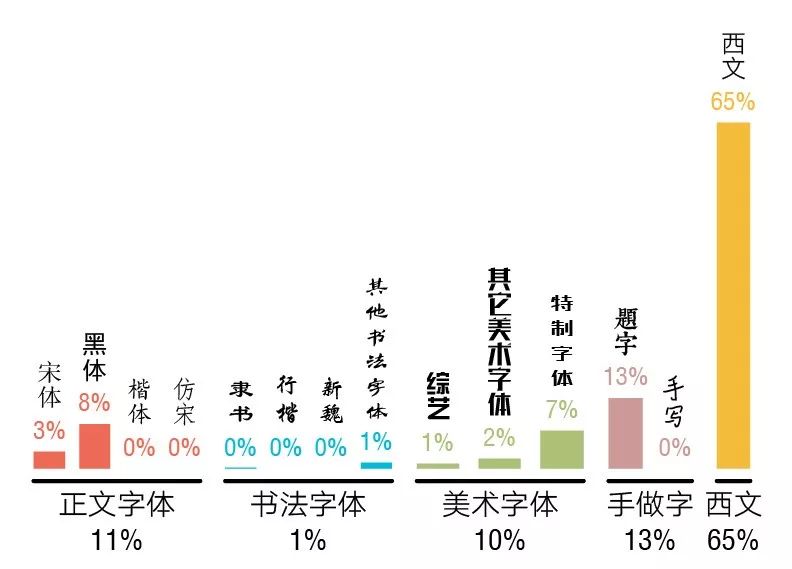

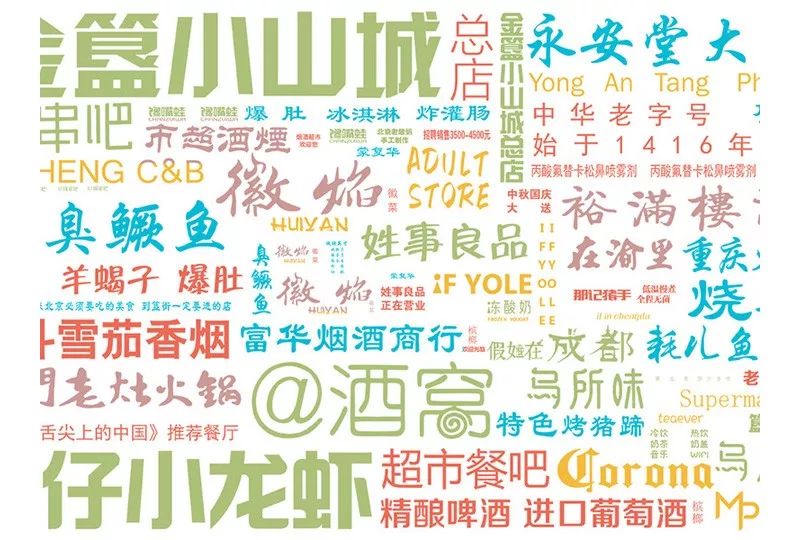
Sanlitun Taikoo Li and Sanlitun SOHO are always overcrowded, but the mechanical and electrical compound across the street is a quiet place. Although Beijing is becoming more and more international, it is still not so easy to find a street with more Western characters than Chinese on both sides. Therefore, In this place where Western languages occupy about 2/3 of the area, you will occasionally really mistakenly think that you are in a foreign city (the Chinatown). In particular, these Western words are not only fashionable shop signs, but also a lot of practical words, such as information on rental agencies, beauty and manicure, and even Chinese training courses. Oddly, there are hardly any calligraphic characters appearing here.
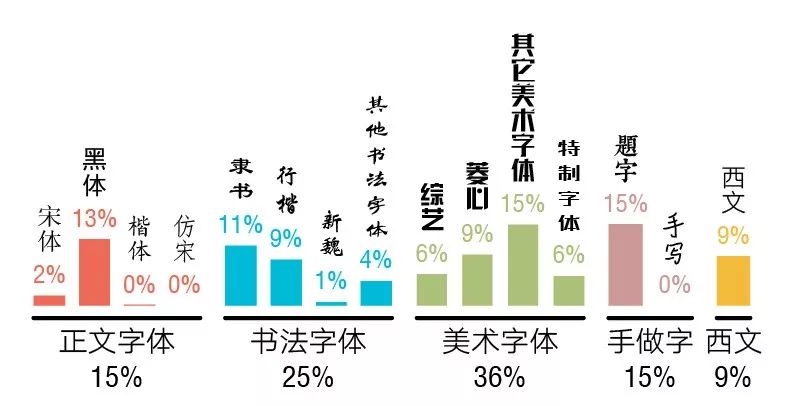

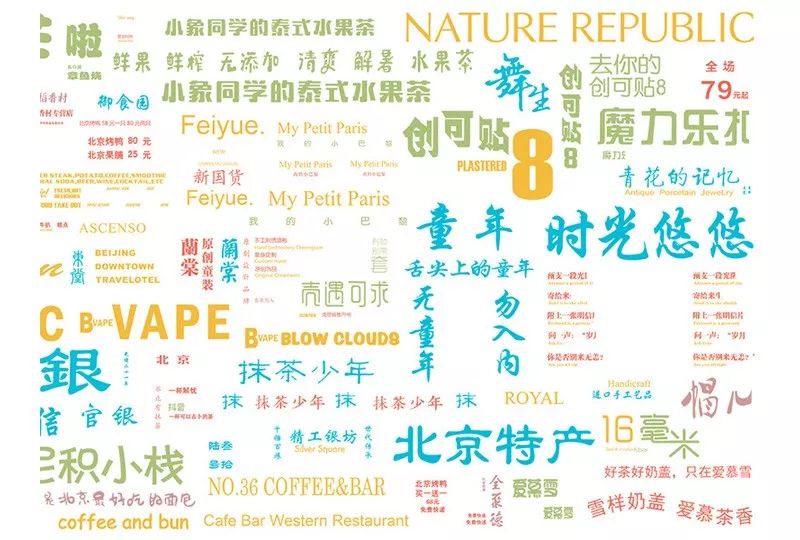
Gui Street! Of course there must be Guijie. Although Guijie Street has also undergone a round of renovation not long ago, it has not followed the footsteps of Summer Palace Road in terms of fonts. Although there are not many time-honored brands in Guijie Street, there are many "Old Guijie Stores", and you can clearly feel their requirements for their store image. No single typeface dominates here, body typefaces, calligraphic typefaces and fine art typefaces are all commonly used, and there are many signboards inscribed by calligraphers. It is the nature of businesses to be unconventional. At least in terms of fonts used, Guijie Street is a qualified commercial street.
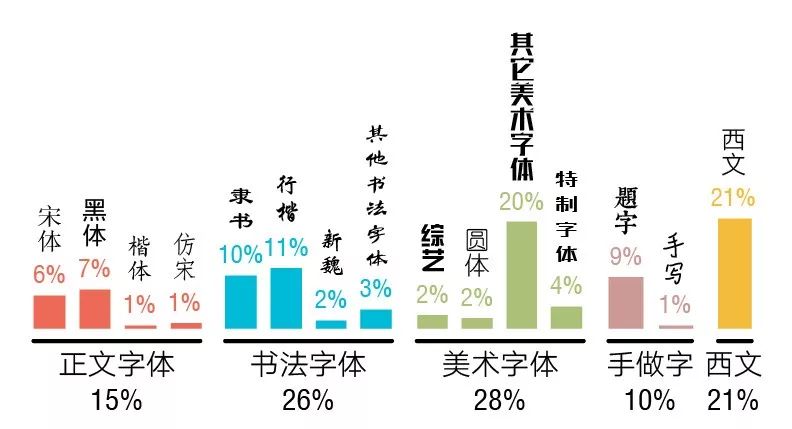

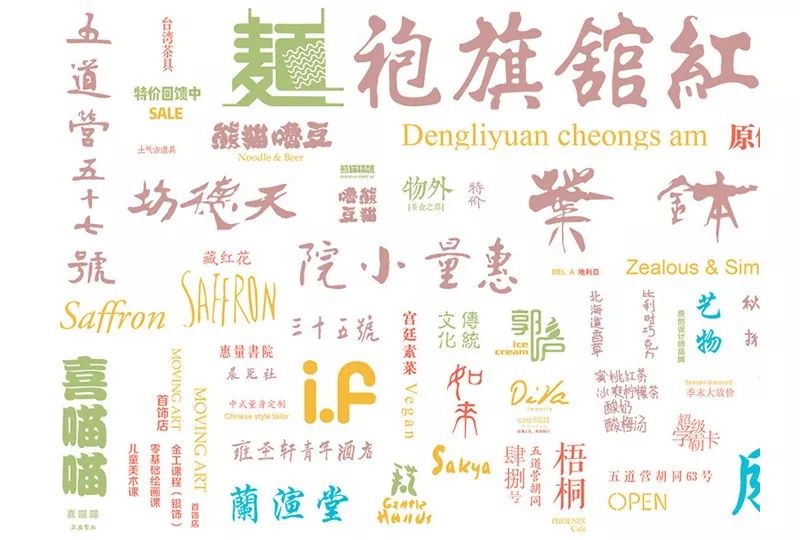
On the composition of the font , Nanluoguxiang is somewhat similar to Guijie Street - for example, there is no dominant font, and a large number of black fonts, official script, Xingkai and some special art fonts are used. It seems to remind us that although the government strives to focus on "historical culture" in Nanluoguxiang's business, tourists who don't know the place hope to find some Beijing characteristics and literary atmosphere here, but the font used in Nanluoguxiang confirms its The essence - a snack street.
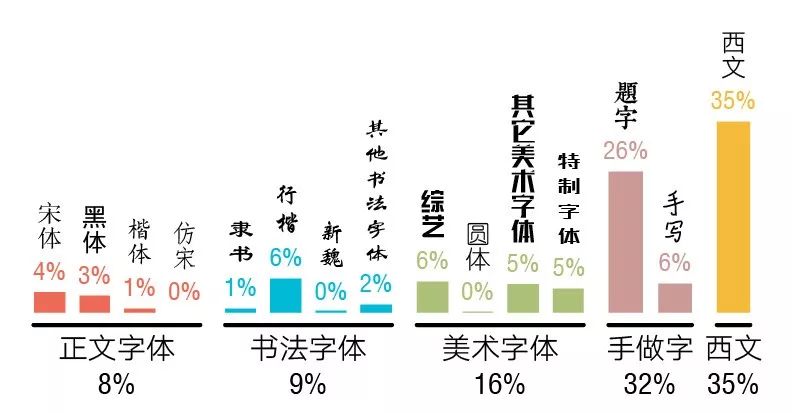

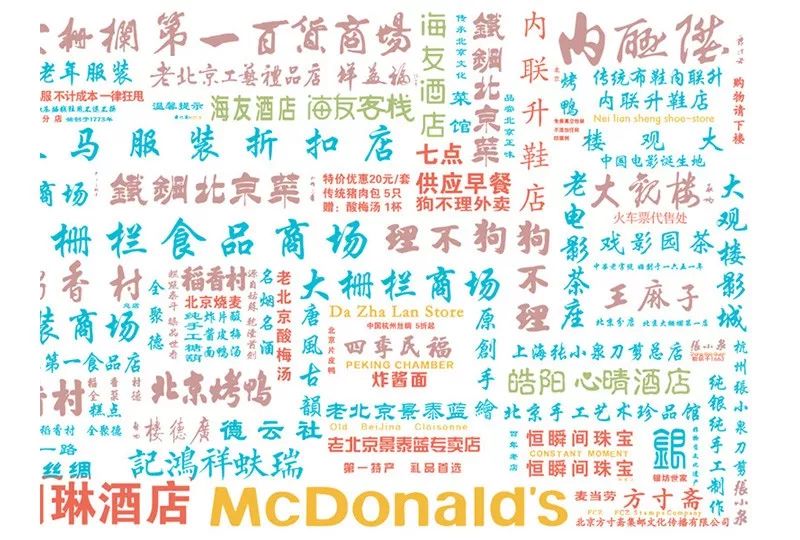
A few years ago, often Some people compare Nanluoguxiang and Wudaoying Hutong, but now we can observe the difference between these two Hutongs through the fonts. Wudaoying has a high proportion of hand-made characters. In other words, before the store opens, it is more patient to write/draw a signboard for its store in person or by someone, rather than open Word to find an existing one. font. In addition, the relatively high proportion of Western and Song fonts is also worthy of attention. From the words in these two alleys, it can be read that If Nanluoguxiang is a fake literature and art, then Wudaoying is closer to the real literature and art.
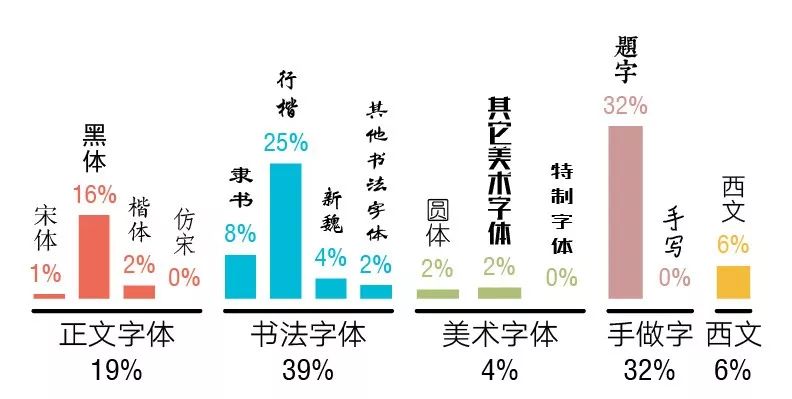

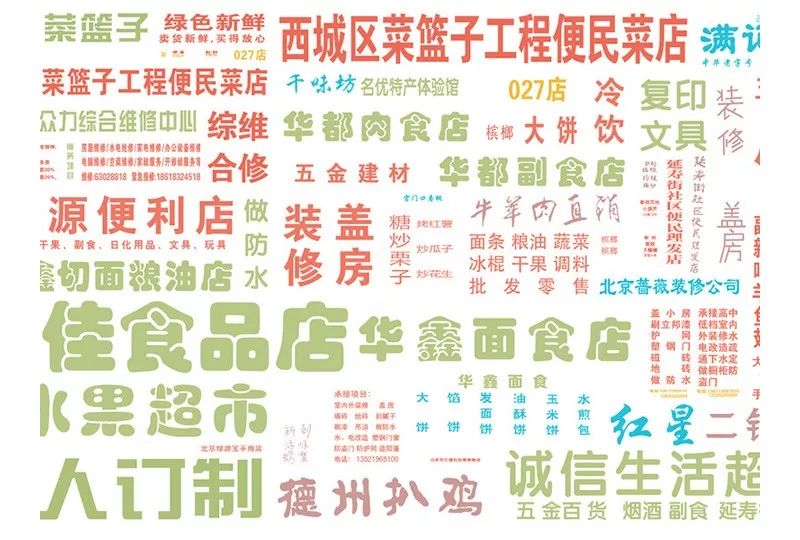
Dashilan Commercial Street The characters used are distinctive: the proportion of inscriptions is extremely high, followed by Xingkai. Most of these inscriptions are thanks to time-honored brands, and the reason why Xingkai appears here is not difficult to guess. This is a quick alternative when you want to reflect "traditional culture" but don't want to actually write a plaque. The juxtaposition of the inscription and Xingkai seems to reflect the embarrassment of Dashilan Commercial Street: on the one hand, it has a strong heritage, but on the other hand, it is bound by tradition.
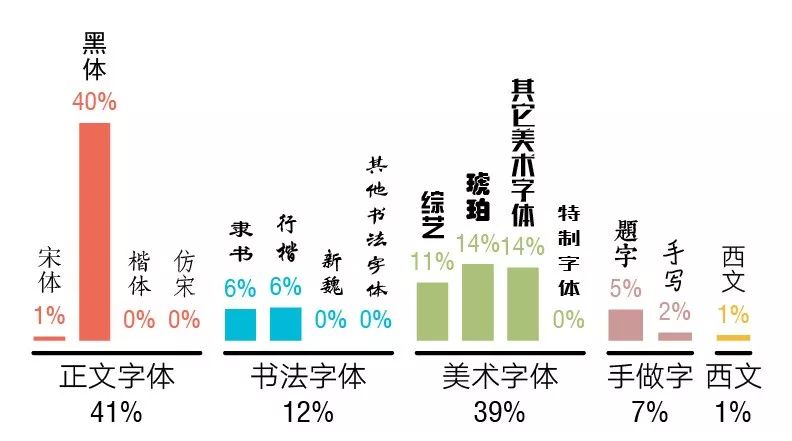

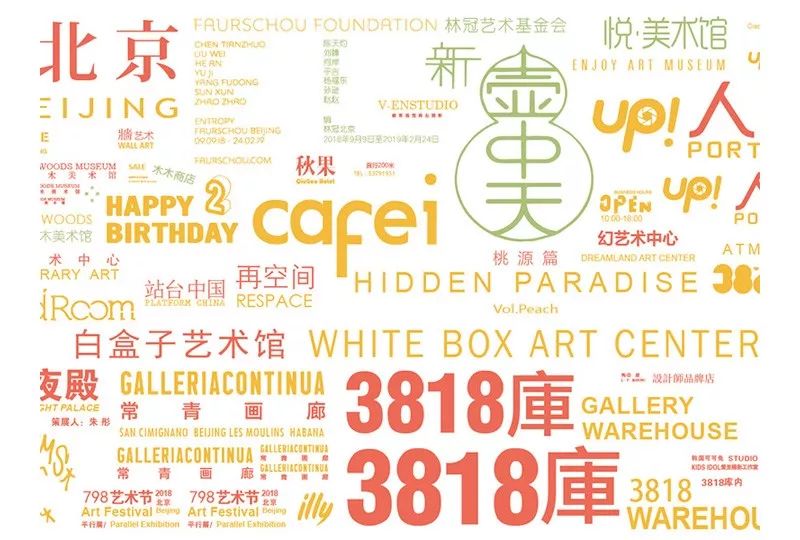
Yanshou Street may be this The least well-known of the 8 streets, but the characters on this street may be the most familiar to you. The small street outside your community may be like this. This small alley, which is several hundred meters away from Dazhalan Commercial Street, is a typical example of a large number of streets oriented towards convenience services. The fonts it uses are as unpretentious as the functions it undertakes-the most dominant is the simple black body. Even if artistic characters are used, they are often several fonts that come with the office. Yanshou Street has no burden of formalism, where function is the most important.
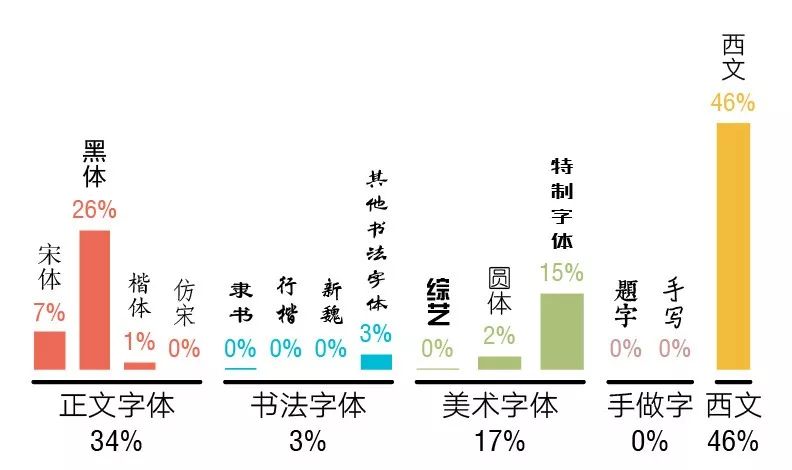
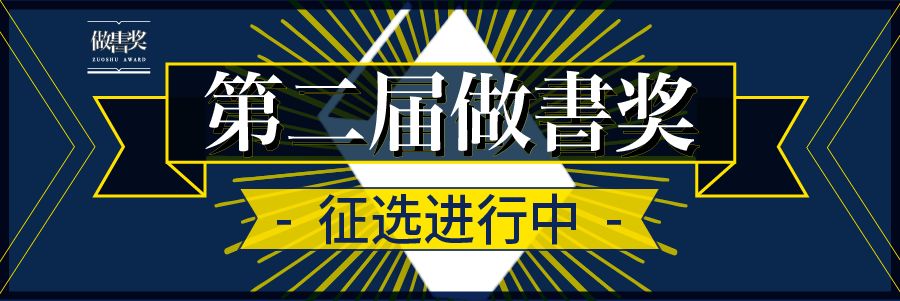
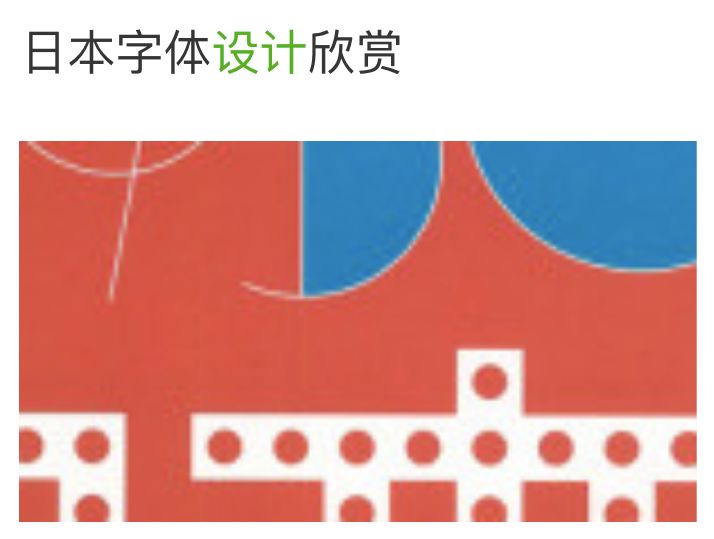
Route 797 is Art 798 One of the two east-west main roads in the district (the other is 798 Road...). In addition to the expected extensive use of Western languages, its most notable feature is the use of text fonts. Road 797 is the only street among the 8 streets selected this time, whose body font ratio is higher than the sum of all other Chinese font ratios (the other one that is closer is Yanshou Street). Perhaps for these modern art institutions, calligraphy fonts and artistic characters represent tradition and some past aesthetic tendencies, while concise body fonts represent modernity. An obvious difference between 797 Road and Yanshou Street in the use of boldface is that the convenience stores on Yanshou Street often compress the boldface horizontally, but the galleries on 797th Street will not do so.
After seeing these 8 streets with a total length of nearly 2,000 meters, I couldn’t help thinking of the first text push of Diduhui two and a half years ago——"Words Are Like a City". Before completing the statistics, we did not expect such a big difference in the fonts of each street. The statistical results make us more convinced that words are like streets, and words are like cities.
And we also believe that some streets in Beijing should not be what they are now, such as the Summer Palace Road outside the east gate of the World Heritage Summer Palace, which appeared at the beginning of the article. Although we may not be sensitive enough to fonts, maybe we still can’t tell the difference between Xingkai and Xinwei, or black body and variety, but this is not a reason not to consider fonts in street design.
Of course, Yanshou Street and 797 Road, which are dominated by black fonts but have different styles, tell us that in addition to fonts, factors such as the material, color, size, and arrangement of characters will also affect the appearance of the street. We'll explore that in a future article if we get the chance. In addition, coincidentally, Yanshou Street is currently conducting a design competition. If you are interested, you can click "Read the original text" at the end of the article to follow the progress of the competition. Looking forward to what it will look like in the future.
Planner: Song Zhuangzhuang
Research: Song Zhuangzhuang, Zhan Xuqiang Design & Drawing: Song Zhuangzhuang, Zhuo Jiaqi, Zhang Jing
Type Design Consultant: Li Zhiqian
Disclaimer
This article is reproduced with the authorization of Diduhui(ID:diduhuiBJ”< /span>
It does not represent the position of writing a book, if there is plagiarism, it has nothing to do with writing a book
Reading also needs to be independent, please maintain your own position
PleaseTreat the article rationally
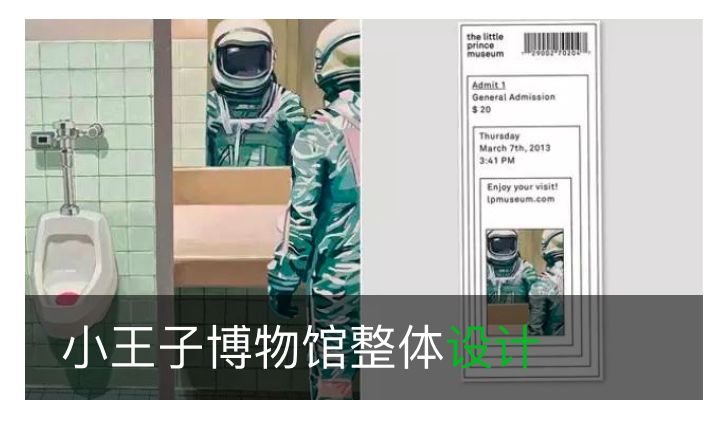
▽ Click「Picture」Read more exciting content
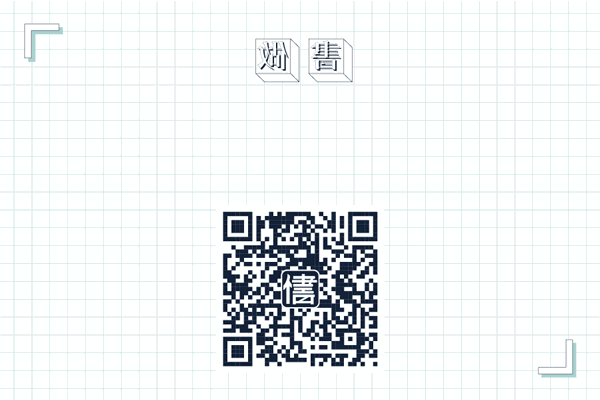
▽Click「Read the original text」Enter the book store
Articles are uploaded by users and are for non-commercial browsing only. Posted by: Lomu, please indicate the source: https://www.daogebangong.com/en/articles/detail/Beijing%20Streets%20Font%20Design%20Analysis%20Report.html

 支付宝扫一扫
支付宝扫一扫 
评论列表(196条)
测试